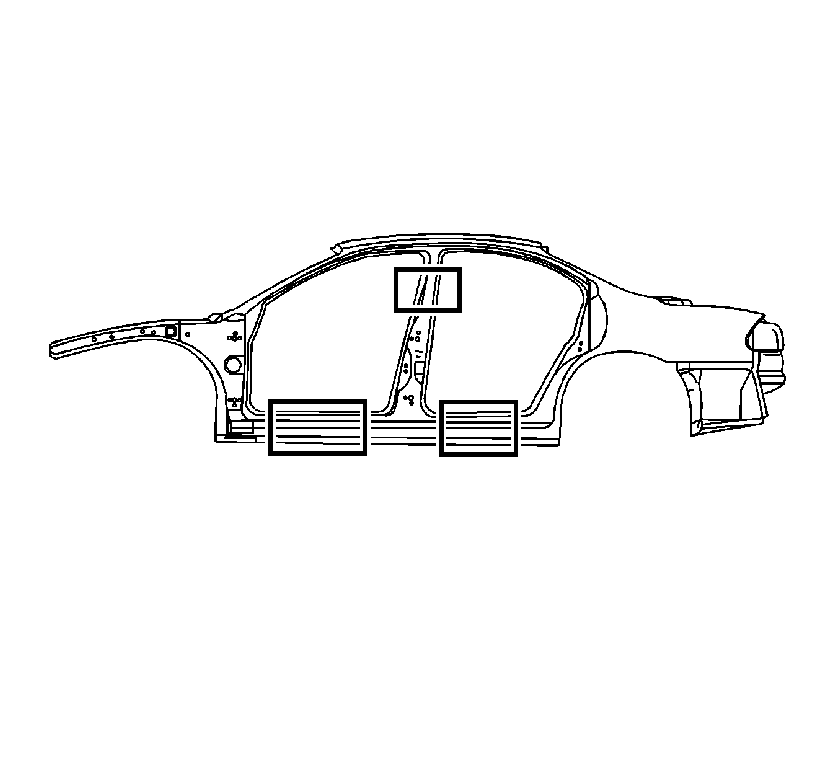For 1990-2009 cars only
Removal Procedure
- The rocker panel reinforcement can be removed by simply drilling out all the factory welds. The reinforcement panel (3) is then installed and plug welded at the original factory welds. Sectioning of the inner rocker panel reinforcements is not recommended. For outer rocker panel service information see the outer door frame opening service procedures.
- Remove all related panels and components.
- Visually inspect and restore as much of the damage as possible.
- Cut the panel in the areas where the sectioning is to take place. Sectioning should be performed in recommended areas only.
- Remove sealers and anti-corrosion materials as necessary.
- Measure 100 mm (4 in) below the seat belt anchor (1) for sectioning location of the inner reinforcement.
- Cut the inner reinforcement panel.
- Note the recommended offset of the sectioning cuts, should be 100 mm (4 in) when sectioning both the inner and the outer panels.
- Locate, mark, and drill out all factory welds. Note the number and location of welds for installation of the service assembly.
Important: The striker plate is mounted in a cage that allows some degree of adjustment independent of the outer panel's position. Use body dimensions to ensure that the striker mounting location falls within the plate's range of adjustment.

Important: Sectioning of the inner quarter of the inner B-Pillar is not recommended.

Installation Procedure
- On the service part, mark a horizontal line to leave a gap of one and one-half times the thickness of the metal at the sectioning joint (1).
- Cut the service reinforcement panel along this line.
- Cut a 100 mm (4 in) piece from the unused portion of the service part for a backing plate (2).
- Remove the flange on each side of the backing plate so that it will fit behind the sectioning joint.
- Drill 8 mm (1 5/16 in) holes for plug welding in the service part in the locations noted from the original panel.
- Drill holes for plug welding along the sectioning cuts on both the service part and the original panel.
- Locate these holes approximately 25 mm (1 in) from the edge of the sectioning cuts (3).
- Prepare the mating surfaces and position the backing plates with 50 mm (2 in) of the backing plate exposed, then plug weld.
- Position the service part to overlap the exposed 50 mm (2 in) of the backing plate
- Check fit using 3-dimensional measuring equipment, and plug weld accordingly with frequent measurements to ensure proper fit and alignment.
- Stitch weld along the sectioning joint.
- Make 25 mm (1 in) welds along the seam with 25 mm (1 in) gaps between .
- Go back and complete the stitch weld. This will create a solid joint with minimal heat distortion.
- Complete all other welds and sectioning procedures as necessary.
- Clean and prepare welded surfaces.
- Prime with 2-part catalyzed primer.
- Apply sealers and anti-corrosion protection materials as necessary.
- Install all related panels and components.

Notice: Use supplies, primers, basecoats and clearcoats from the same manufacturer. Do not intermix paint systems or paint damage may occur.
